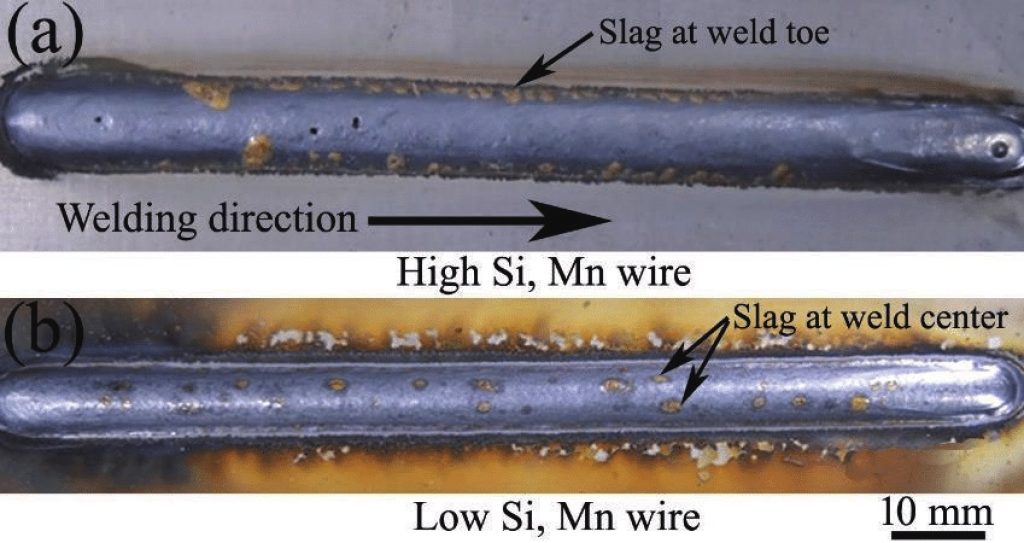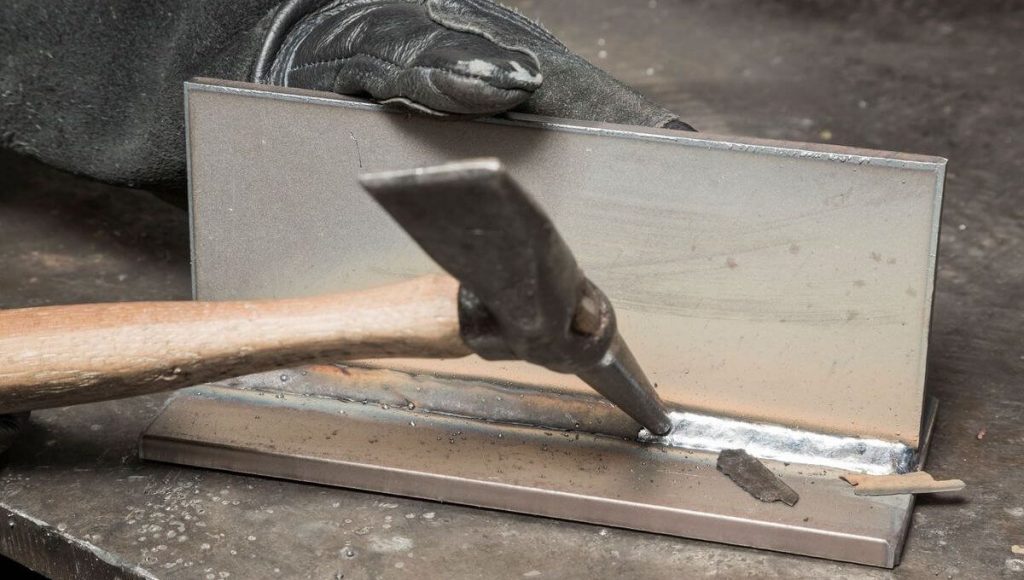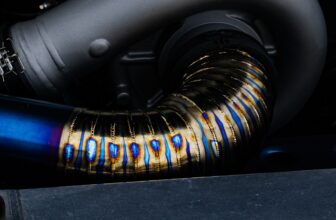The slag in welding is an unwanted by-product of the welding process and should be removed to avoid cracking upon cooling. Slag is primarily composed of silicon dioxide, iron oxide, aluminum oxide, magnesium oxide and calcium oxide. It forms while the welding rod melts the base material in a process called fusion.
In this article we will discuss how slag is created during welding and what steps you can take to eliminate it from your welds.
But what is slag in welding?
Slag inclusions are one of the easiest weld defects to identify because they have a distinctive appearance. These needle-like or spherical balls can be found throughout any thicknesses, and sometimes even penetrate through multiple layers into your metal structure! They form due either too much heat during welding (which reduces durability) OR when material isn’t mixed properly before being deposited on top for additional support – this typically occurs at higher temperatures where there’s less chance that oxygen molecules will become trapped within its mixers thanks again competence from impurities like slags thus resulting.

Slag is composed primarily of silicon dioxide, iron oxide, aluminum oxide, magnesium oxide and calcium oxide (source). It forms while the welding rod melts the base material in a process called fusion. This can be done by several methods: gas torches, electric heating stations. The resulting molten metal can be poured off into molds for casting or used to fill trenches in order to make welded joints.
The different types of slag and how to deal with them
Slag can be soft, hard or brittle. Soft slag is gray and powdery in appearance; this type of slag melts when exposed to the heat from a welding arc and can be easily removed by blasting or grinding. Harder types of slag are white to tan in color, and they turn into a powder that can be easily chipped or removed with a grinder. Brittle slag, which is the hardest kind of slag, crumbles at low temperatures caused by lack of fusion on the base material. Because this type of slag has poor welding qualities, it should be removed using a chipping hammer.
Tips for avoiding slag buildup in the welds
First of all, always check your welding equipment to ensure that it is in proper working order. You should also be sure you are holding the correct welding arc length, which means being aware of how far away from the base metal you are when starting up an arc. Your electrode should not touch the base metal when you start up an arc.
The most important thing to keep in mind when you are welding with gas is to never stop too long without shaking or hitting the slag off. When you rest too long without doing anything, your base metal will cool and contract away from the molten material that was just added to it. Then as it heats up again, the two parts can separate creating a weak point in your work.
If you are welding in an enclosed room, you should be aware of how much ventilation is available because your slag will build up very quickly if there isn’t enough air to keep it cool. If your slag is beginning to look like a glacier, then chances are you need more ventilation. Some welders recommend using a fan to blow the slag off, but this is not always recommended because moving that much air can also cause moisture in the form of rust to appear on your finished metal.
How to remove slag from your welds

A slag hammer is also a good tool to have at your disposal if you find yourself unable to shake or knock off any buildup because it will chip and break the slag away from the weld. These hammers come in many different shapes and sizes for different purposes.
As a general rule, if it is possible to shake off slag from a new weld, you have not melted enough material for the slag and the metal to join together. Try going over it again until the two parts of the weld come together as one. If you notice any holes in your finished work, try plug welding those spots with welds that you melt all the way into the base metal.
One of the most tried and true methods for removing slag is with a simple ball peen or sledge hammer because it doesn’t require any electrical current to drive the chipping process. However, if you are working within an enclosed room and you don’t have access to sufficient ventilation, then this may not be the best idea.
Lincoln Electric Industrial Chipping Hammer
High Strength Steel Construction
Spiral Spring Handle for Shock Absorption
Proper welding techniques are essential to preventing slag in welding
Conclusion to dealing with slag in welding
Welding slag can be a major issue for welders. It is important to know how slag forms and what it looks like in order to prevent slags from forming as you work with welding projects. The most common form of slag removal is by hand with a chisel hammer, but this may not be the best option if there isn’t enough ventilation available or your project takes place inside an enclosed space. One way that we recommend alleviating slag issues while welding metal projects is through proper electrode handling techniques and planning ahead so that you are only working on one section at a time. These two tips should help keep slags away during your next welding session.







